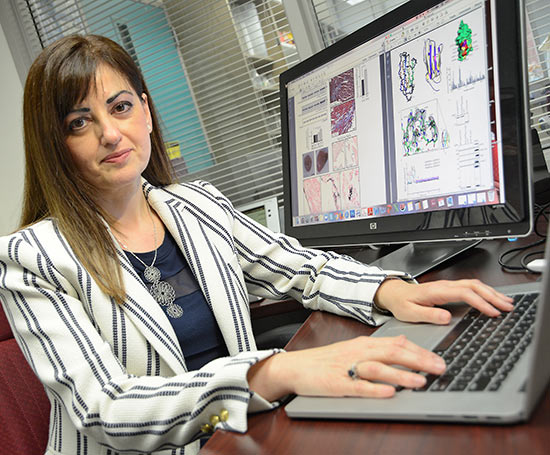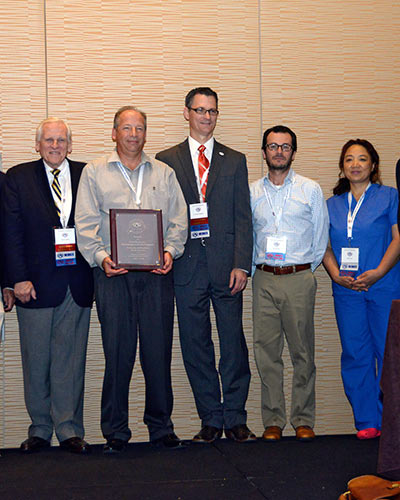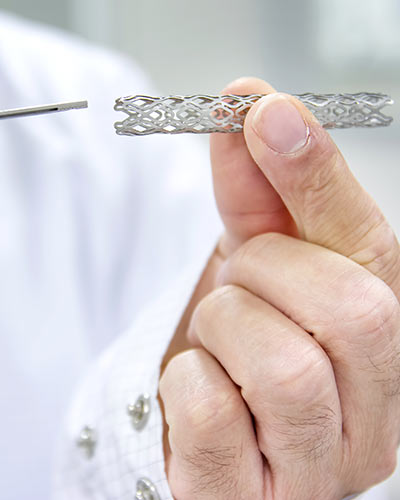June 07, 2017 | David Kohn

Study Finds That “Obscurin” Gene Leads To Arrhythmia and a Weakened Heart – Especially When Combined With Stress
Heart disease kills more than 600,000 Americans every year, which translates to more than one in every four deaths. Although lifestyle choices contribute to the disease, genetics play a major role. This genetic facet has remained largely mysterious. But new research by scientists at the University of Maryland School of Medicine (UM SOM) has identified what may be a key player: a mutated gene that leads to irregular heartbeat, which can lead to a dangerously inefficient heart.
The findings were published today in the journal Science Advances. The study is the first to illuminate details of how this particular gene, which is called OBSCN, works in heart disease. The gene produces proteins known as obscurins, which seem to be crucial to many physiologic processes, including heart function.
“This study gives us new information about the involvement of obscurins in the mechanics of heart disease,” said the senior author of the study, Aikaterini Kontrogianni-Konstantopoulos, PhD, Professor of Biochemistry and Molecular Biology at UM SOM. “It suggests that people carrying a mutated version of OBSCN may develop heart disease.”
For almost two decades, Dr. Kontrogianni-Konstantopoulos has been studying the OBSCN gene and obscurin proteins. Research has found that the gene is often mutated; some of these mutations may play a role in heart disease and certain cancers. She and her colleagues have recently shown that one mutation may play a role in the development of congenital heart disease. However, the cell processes that are affected by the OBSCN mutation have remained largely a mystery.
In this latest study, Dr. Kontrogianni-Konstantopoulos and her team unraveled this question. They focused on a mutation that has been linked to an enlarged heart, also known as hypertrophic cardiomyopathy. In this condition, the heart muscle becomes thickened and scarred, and has trouble pumping blood. She created a strain of mouse that carries the mutation, and then divided the animals into three groups: a group that experienced no stress, one that experienced moderate stress, and one that experienced significant stress.
She found that animals in the no-stress group developed irregular heartbeat, also known as arrhythmia. The mildly stressed animals developed thickened hearts, and the severely stressed animals developed hearts that were scarred and ineffective.
Dr. Kontrogianni-Konstantopoulos is one of several scientists who first discovered OBSCN in 2001. Prior to that it was all but unknown, hence its name. Since then, she has studied the gene, focusing on its role in both heart disease and cancer. She currently has several other ongoing studies of its effects in both heart disease and cancer.
It is not clear exactly how the mutated OBSCN gene causes heart problems. Her study is the first one to examine this question in relation to the obscurin mutations. She and her colleagues found evidence that the particular mutation they focused on may affect the ability of a protein called phospholamban to regulate the movement of calcium in heart muscle cells; this movement plays a crucial role in controlling how the heart contracts and relaxes. If this process goes awry, the heart does not function properly.
Dr. Kontrogianni-Konstantopoulos says this work could eventually lead to targeted therapies for people who have OBSCN mutations.
“Heart disease is one of our most urgent national health issues,” said UM SOM Dean E. Albert Reece, MD, PhD, MBA, who is also the vice president for Medical Affairs, University of Maryland, and the John Z. and Akiko K. Bowers Distinguished Professor. “Dr. Kontrogianni-Konstantopoulos has elucidated this new aspect of the molecular basis of at least some cardiovascular illness. I look forward to seeing what she and others do to further build on this new discovery.”
About the University of Maryland School of Medicine
Celebrating its 210th Anniversary, the University of Maryland School of Medicine was chartered in 1807 and is the first public medical school in the United States and continues today as an innovative leader in accelerating innovation and discovery in medicine. The School of Medicine is the founding school of the University of Maryland and is an integral part of the 11-campus University System of Maryland. Located on the University of Maryland’s Baltimore campus, the School of Medicine works closely with the University of Maryland Medical Center and Medical System to provide a research-intensive, academic and clinically based education. With 43 academic departments, centers and institutes and a faculty of more than 3,000 physicians and research scientists plus more than $400 million in extramural funding, the School is regarded as one of the leading biomedical research institutions in the U.S. with top-tier faculty and programs in cancer, brain science, surgery and transplantation, trauma and emergency medicine, vaccine development and human genomics, among other centers of excellence. The School is not only concerned with the health of the citizens of Maryland and the nation, but also has a global presence, with research and treatment facilities in more than 35 countries around the world.
Learn More
• Department of Biochemistry and Molecular Biologymedschool.umaryland.edu/
Contact
Office of Public Affairs
655 West Baltimore Street
Bressler Research Building 14-002
Baltimore, Maryland 21201-1559
Contact Media Relations
(410) 706-5260
Related stories

Friday, December 15, 2023
UMSOM Researchers Discover First Ever Link Between Hemoglobin-Like Protein and Normal Cardiac Development
In a landmark study led by the University of Maryland School of Medicine, researchers discovered for the first time that a certain kind of protein similar to hemoglobin, called cytoglobin, plays an important role in the development of the heart. Specifically, it affects the correct left-right pattern of the heart and other asymmetric organs. The findings, published today in the journal Nature Communications, could eventually lead to the development of new therapeutic interventions to alter the processes that lead to these defects.

Tuesday, September 26, 2017
University of Maryland Medicine Receives Prestigious Award For Its Heart and Lung Resuscitation Program
A heart and lung resuscitation program at University of Maryland Medicine (UMM) has been recognized for its elite level of care by a leading group in the field.

Monday, September 11, 2017
New Study Shows Novel Collaborative Intensive Care Can Significantly Improve Treatment for Heart Patients – and Cut Costs
Researchers at the University of Maryland School of Medicine (UM SOM) have found that a new, collaborative treatment model for seriously ill heart patients with breathing difficulties results in better care and lower costs.

Friday, May 05, 2017
Secondhand Smoke Ups Heart Disease in Unique Group of Female Nonsmokers – Amish Women
New research at the University of Maryland School of Medicine (UM SOM) has found that secondhand smoke tends to have somewhat different effects on men and women. The research, conducted in a Pennsylvania Amish community where virtually no women smoke, found that women who were exposed to secondhand smoke had a greater risk for cardiovascular disease, while men exposed to secondhand smoke tended to have a higher body mass index (BMI).

Wednesday, January 11, 2017
University of Maryland Medical Center Offers Genetic Testing as Standard of Care to Help Improve Outcomes for Heart Stent Patients
The University of Maryland Medical Center (UMMC) is now offering a simple genetic test to patients who receive heart stents to determine whether they have a genetic deficiency that affects how they respond to a common drug to prevent blood clots. Patients are typically given the medication, clopidogrel, to prevent cardiovascular events after having a stent placed in a coronary artery to treat a blockage.

Tuesday, December 20, 2016
First U.S. Babies Treated in Unique Study of Adult Stem Cell Therapy for Congenital Heart Disease
In a first-in-children randomized clinical study, medical researchers at the University of Maryland School of Medicine (UM SOM) and the Interdisciplinary Stem Cell Institute (ISCI) at the University of Miami Miller School of Medicine have begun testing to see whether adult stem cells derived from bone marrow benefit children with the congenital heart defect hypoplastic left heart syndrome (HLHS).
